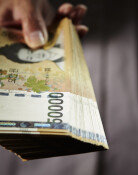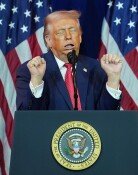Korean Economy Led by The Power of Forties
Korean Economy Led by The Power of Forties
Posted July. 27, 2004 21:59,
People in their forties are the leading generation in the Korean economy.
With the rapidly progressing aging of the population, the number of employees in their forties exceeded the number of employees in their thirties for the first time.
According to the National Statistical Office on Tuesday, as of May 31, employees in their forties totaled 6,238,000 (27.43 percent) out of a total of 22,738,000 employees in Korea, more than the 6,230,000 (27.39 percent) in their thirties.
It is the first time that those in their forties outnumbered those in their thirties since the National Statistical Office started to survey the number of employees by age group in 1980.
In June, it counted that the number (6,249,000) of employees in their forties was again larger than the number (6,246,000) in their thirties. Therefore, the generation exchange that changes the main generation in Korean economy from those in their thirties to those in their forties is seen to not be a temporary phenomenon.
This generation exchange is also revealed in the statistical survey of the economically active population (the population of those over 15 years old, employed plus unemployed seeking employment).
As of June 30, those in their forties comprise 27.0 percent (6,366,000) of the total economically active population in Korea (23,585,000), and this number comes close to the thirties share of the economically active population, 27.2 percent (6,415,000).
The thirties share in the economically active population increased up to 30.5 percent 10 years ago in June 1994. Ever since June 1999, five years later when the thirties share dropped down to 29.2 percent, it has been continuously decreasing.
On the other hand, the forties share has shown a steady increase since five years ago when it stepped up to 23.6 percent from 19.8 percent 10 years ago.
The youth and the old are having mixed joys and sorrows, too.
As the aging of society progresses, the twenties share of the economically active population dropped to 19.9 percent, below 20 percent, last June. It was 25.2 percent in June 1994.
On the other hand, the share of those over 60 years old, only 7.7 percent 10 years ago, stepped up to 10.1 percent, a two-digit number for the first time.
Jin-Hup Song jinhup@donga.com



![[단독]‘아들 주택 11채’ 김경, 공천 보류됐다 강선우가 밀어붙여 구제](https://dimg.donga.com/c/138/175/90/1/wps/NEWS/IMAGE/2026/01/07/133103173.6.jpg)



